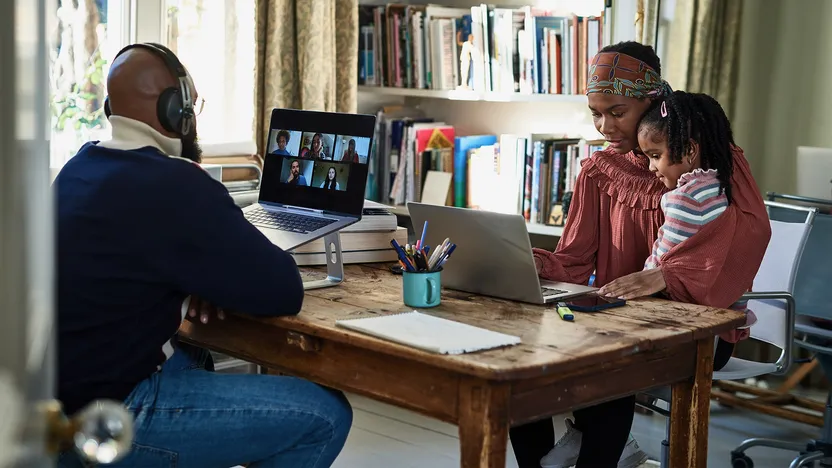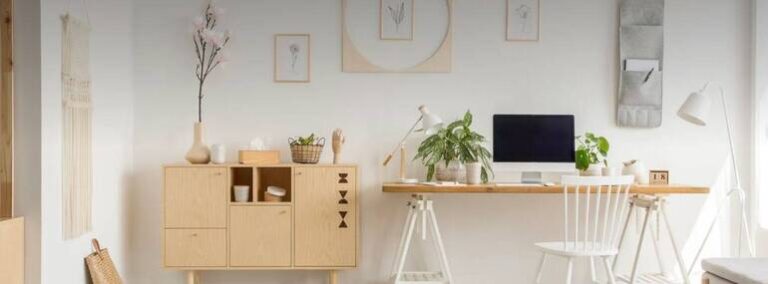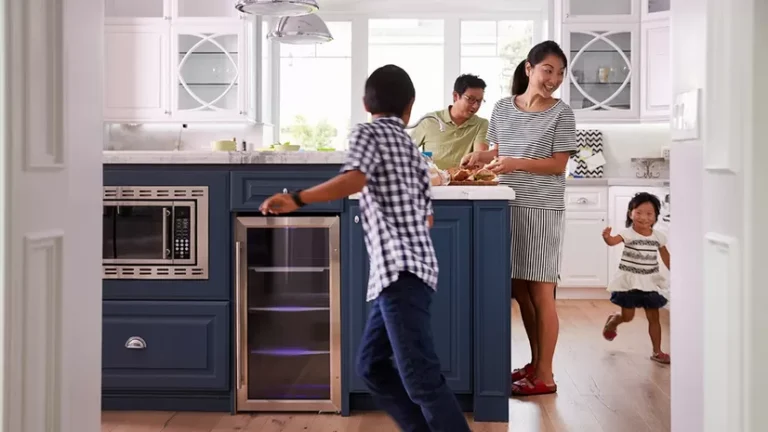
When the COVID-19 pandemic hit, no one was prepared for how working from home would affect our lives—and stretch our living spaces. Suddenly, every humble abode had to squeeze in one or even two workspaces and maybe even a homeschooling area.
Soon, work-from-home needs took over the house, with laptops dotting the kitchen surfaces, stacks of folders covering the dining table, and cords snaking throughout the house.
Yet, as people head back to the office for in-person collaborations instead of Zoom meetings, it’s high time to rein in the WFH sprawl. A change could benefit you in more ways than one.
Work-at-home mess can drain your brain
Research shows that clutter affects not just our health and well-being but also the quality of our work.
“Our brains like order, and constant visual reminders of disorganization drain our cognitive resources, reducing our ability to focus,” says Libby Sander, assistant professor of organizational behavior at Bond University, based in Gold Coast, Australia. “My research shows our physical environments significantly influence our cognition, emotions, and subsequent behaviors, including our relationships with others.”
Disorganization and clutter have a cumulative effect on our brains, adds Sander. So, the more sprawled out the mess and the longer you live with it, the worse it can make you feel.
Ready to calm your mind and increase your living space? Here’s how to tip the scales away from work and back toward life in your home.
Reclaim that closet
Can we talk about the closet you turned into a cute desk nook (aka “cloffice”)? Instagram loved it. But if you’re returning to the office for at least a few days a week, it might be time to take back that space.
“When you sacrifice storage space, there’s always a trade-off,” says Melissa Corriveau, professional organizer and founder of Life With Less Mess. “If your creative nook ends up creating more clutter elsewhere in your home, it’s not worth the cuteness factor.”
You can slowly transition your cloffice back into a closet by taking what you can to your actual office and storing the rest of your office supplies.
Clear the kitchen island
Working at your kitchen counter seemed like a good idea at first. (It is near the coffee, after all.)
But fast-forward a few years, and your laptop, papers, and chargers have all taken up permanent residence at the kitchen counter, where you used to prep food.
“The kitchen island is not an ideal home office,” says Corriveau. “Kitchen islands are spaces that see a lot of traffic—and a lot of mess—throughout the day. If you’re also using this space for important papers and expensive technology, odds are high that something will get spilled on or messed up.”
If you still like the feeling of getting work done in the kitchen, consider adding a small, functional desk to a corner of the room.
Worried that you’ll miss the ability to move from standing to sitting periodically throughout the day? Then make it an adjustable desk.
Recover your dining table
At the height of the pandemic, your dining room was probably a workhorse—serving as a school and a de facto office all at once. But three years later, it’s now the drop zone for all things work-related.
Wouldn’t you love to clear that table by Thanksgiving? (Bonus: You don’t have to give up working there completely to make the room more flexible for your needs.)
“If your dining room table is your best option for working from home, consider having a space to store your supplies, such as a rolling cart,” suggests Corriveau. “This can help you quickly switch from ‘in the office’ to ‘off the clock.’”
Put all your electronics, office supplies, and paperwork in the cart when you don’t need it. Then roll it back out and unload it when it’s time to work again, suggests Corriveau.
Take back the living room
When you started working from home, hanging out in PJs on the sectional with your laptop on your knees felt cozy.
But now it’s time to take your couch back for reading or watching TV—without navigating paperwork on the cushions. You’ll also be doing your spinal column a favor if you find a better place to work at home.
“I repurposed a spare bedroom into a cozy home office, complete with a comfortable chair, plants, and calming artwork,” says Eloisa Hife, chief technology officer at Bark Like Meow in Austin, TX, who works from home.
Embrace the flex
Finally, if you know you’ll still be working from home sometimes—and there’s no room for a dedicated workspace—use multipurpose furnishings.
Corriveau says to look for furnishings that can help a room function as a flex space, including the following:
A rolling cart that can be pulled out when needed
Furniture with storage, like an ottoman or a coffee table with space for baskets—so that “office supplies” can be quickly tucked away
A small desk that fits in the corner of a bedroom so that you have a door to close when you need silence for phone conversations
“I had to repurpose a part of my living room to set up a makeshift home office, ensuring it was comfortable, brightly lit, and free from distractions,” says Rick Chahal, paralegal and legal assistant at Kahlon Law. “As we transition into the hybrid work model, my space has morphed into a versatile area.”
Article originally appeared on Realtor.com.







